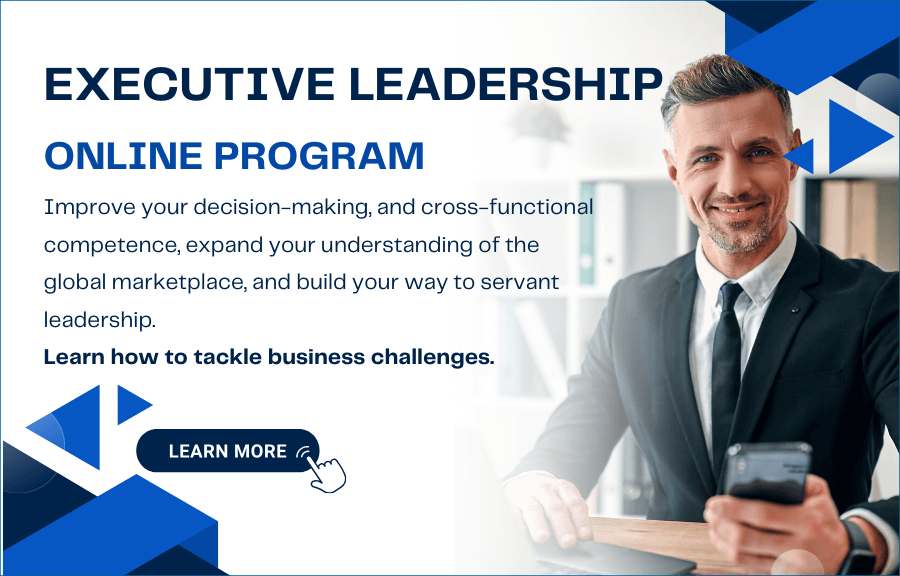5 Steps to Transformational Leadership
Transformational leadership is a demanded leadership style in today’s business world that can inspire the people in the network. Typically, transformational leaders are charismatic, energetic, enthusiastic, broad-minded, active-listened, and passionate. Transformational leaders do not focus only on targets and numbers, they are focused on every individual in the group to succeed.
In this article
We’ve explored transformational leadership and how to become a transformational leader in 5 steps in this article.
📌 Hint: Do not skip this article, you will find FREE Leadership Training resources throughout the article.
What Is Transformational Leadership?
Leadership expert James MacGregor Burns introduced the concept of transformational leadership in his book “Leadership.”

His Leadership book, defining leadership, earned the prestigious National Book Award and Pulitzer Prize, an award administered by Columbia University for achievements in newspaper, magazine, online journalism, literature, and musical composition within the United States.
MacGregor defined transformational leadership as a process where “leaders and their followers raise one another to higher levels of morality and motivation.” Since then, the transformational leadership style has become a phenomenal leadership style that is tried to be achieved by many leaders. Several leadership experts evolved the concept over the years.
💡 You might be interested in the 21 Leadership Skills Professionals Expect to See at the Workplace article.
Watch the Transformational Leadership – 5 Steps to Become a Transformational Leader video
We’ve listed the 5 steps to become a transformational leader in our following YouTube video.
💡 Read 15 Types of Leadership article to learn about other leadership styles.
8 Common Traits of a Transformational Leader
There are several traits of a transformational leader. We’ve listed the 8 common traits below.
- Is a model of integrity and fairness: Transformational leaders follow the rules and ethical standards. They are fair and at equal distance to all members of the group. Their actions are taken as a role model by others.
- Sets clear goals: Transformational leadership requires setting clear goals for everyone. For instance, “creating good software for grocery stores” is not a clear goal. It is subjective, and “good” expectancy can differ from one grocery store to another. Goals should be quantified as much as possible so that people can understand the metrics of the goal. For instance, “creating a software that will monitor the inventory of the grocery stores, create notifications for low stocks, analyze forecasts and predict future demand”.
- Has high expectations: Transformational leaders are givers, so they have higher expectations than other leaders.
- Encourages others: Instead of setting goals and targets, transformational leadership involves encouraging others to ensure goals are met. Encouraging people can be done in different ways through promotion, incentives, activities, or sometimes even a verbal appreciation can stimulate the energy of individuals.
- Provides support and recognition: Transformational leaders provide the needed support by the team. Support can be in many ways. Such as a technical tool that the people need, training that the team needs to increase their knowledge or other similar types of support. Recognition is acknowledging the success of individuals in your group. If anyone is performing better than expected, or if the all group succeeded in a milestone, these should be celebrated and incentivized if possible. Recognition is crucial in transformational leadership.
- Stirs the emotions of people: People are not in the same mood every day. And, peoples’ moods affect work performance directly. Transformational leaders are experts in stirring the emotions of people to achieve maximum performance in the workplace.
- Gets people to look beyond their self-interest: Selfishness is in human nature. People think of their self-interest in the first place among other things. Transformational leadership ensures that people look beyond their self-interest and achieve together as a team. In many cases, overall success brings much more than individual success.
- Inspires people to reach for the improbable: You should have heard the saying “difficult is done at once, the impossible takes a little longer”. We can tell that it is a motto for transformational leaders. They always expect their people to aim for improbable, and reach outstanding targets.
Several years after the inception of transformational leadership, it is still argued to be one of the most important ideas in business leadership.
Executive Leadership Training Program
San Francisco Business School offers an online, self-paced comprehensive executive leadership training program. Executive Leadership Training Program Covers:
- Generic & Adaptive Leadership – Change is inevitable and leaders must be prepared for the changing dynamics of the business environment. Learn how to adapt your leadership in changing circumstances.
- Grasping Power – Only powerful leaders sustain in a brutal business environment. You’ll learn how to grasp power.
- Servant Leadership – Leaders must be adaptive, servant, and transformational in today’s business world. Walk the path to be a servant leader that empowers people and organizations.
- Emotional Intelligence – Emotional effects are unavoidable wherever there is a human factor. Develop your competence to be an agile, optimistic, and humble leader. Learn how to show people why they matter.
- Tomorrow’s Leaders – You cannot lead the millennials the same way as you do for boomers. Increase your awareness for future leadership and transformational leadership.
- Leadership in Hard Times – While being an optimist leader, you have to be ready for the unanticipated cases. Improve your contingency planning skills, dealing with conflict of interest, and how to overcome a crisis.
You can check further on the program page.
Transformational Leader Example – Jennifer
While we are explaining what transformational leadership is and the traits of a transformational leader, it is better to provide an example transformational leader scenario. That will help us to visualize transformational leadership in our minds better.
Jennifer is a Director in a multinational company. Everyone respects Jennifer. She sets clear goals and targets for her team and provides maximum support and recognition throughout the team’s journey. She inspires and encourages her team members while expecting and demonstrating the highest standards. In return, her people are fiercely loyal, and they’re highly successful – as individuals, and as a team. In short, Jennifer is a Transformational Leader.
By contrast, other leaders in the company report that their people seem disengaged. They experience high staff turnover, and their results are often disappointing. So, what does Jennifer do that other leaders don’t?
To begin with, Jennifer regularly reminds her team members of the purpose of their work. And she knows that she’s a role model for her team, so she acts with integrity in all of her working relationships. She stirs the emotions of people and gets people to look beyond their self-interest. A very good example of transformational leadership.
Now, let’s go through the 5 steps to become a transformational leader.
Watch Laura’s 30 Seconds Experience – Executive Leadership Program
Hear from Our Alumni Laura Smith, Head of Design. Laura attended the Executive Leadership Program at SFBS.
How to Become a Transformational Leader
We’ve distilled the common traits of a transformational leader into a process that you can use to become a transformational leader. This involves you:
- Creating an inspiring vision of the future.
- Motivating people to buy into and deliver the vision.
- Managing delivery of the vision.
- Building ever-stronger, trust-based relationships with your people.
- Monitor and Keep Up the Pace of the Changing Environment.
Use these steps to develop your transformational leadership skills. Let’s go over each of these steps.
Free Online Leadership Training Program
One of the requirements to be a good leader is to improve yourself continuously. The best way to do this is, to enhance your competence through training. Take a step ahead and jumpstart your leadership competence. Enroll in our 1-hour Free Leadership Training program.
Step 1 to the Transformational Leadership – Create an Inspiring Vision
People need a compelling reason to follow your lead, and this is why you need to create and communicate an inspiring vision of the future.
Your vision sets out your team or organization’s purpose – why you all get up in the morning to do what you do. You develop this partly by understanding the values of the people you lead, partly by understanding the capabilities and resources of your organization, and partly by conducting an intelligent analysis of your environment and selecting the best way forward within it.
This is the subject of business unit strategy, and developing a coherent strategy takes a lot of hard work and careful thought. Transformational leadership requires creating a strong bond between the organization’s vision and the business unit’s vision.
If you’re developing a vision for your team, start with the company’s mission and vision, and explore the ways in which your team can contribute directly to it.
Assume that you are working as Director of Product in a FinTech company. The company’s vision is to provide the optimum investment options for individuals. If your team is working on creating a new app to identify the investment preferences of individuals, you can name your vision as “unleash your unique investment strategy to maximize returns that fit your confidence level”.
Step 2 to the Transformational Leadership – Motivate People to Buy Into and Deliver the Vision
Now, starting with your mission statement, you need to appeal to your people’s values and inspire them with where you’re going to lead them, and why.
Use business storytelling as part of your call to action: this will help people appreciate the positive impact of your vision on the people you’re trying to help. If the only person you’re trying to help is yourself, you won’t inspire anyone. Individuals in your team should see how the vision affects their self-interests. That is the best way to get people buy-in to your vision as part of transformational leadership.
Then, talk about your vision often. Link it to people’s goals and tasks to give it context, and help people see how they can contribute to it. You can start every meeting with a one-minute speech talking about the vision of the business unit. So, people will embrace the vision in their daily work.
Transformational leaders also know that nothing significant happens unless they encourage their people. So, make sure that you know about the different kinds of motivation, and use these to inspire your people to deliver their best.
Step 3 to Become a Transformational Leader – Manage Delivery of the Vision
A vision is no use on its own: it needs to become reality. However, many leaders make the mistake of developing a vision, but of not putting in the hard and often mundane work of delivering it.
To manage the delivery of your vision, you’ll need to combine successful project management with dynamic change management. This will help you deliver the changes you need with the full support of your people. Communicate each person’s roles and responsibilities clearly, and connect these to your plans. A RACI chart can help you to clarify this. RACI chart stands for Responsible, Accountable, Consulted, and Informed. Basically, for each critical task, this chart shows which is accountable, who should be informed, etc. These kinds of tools can help you to ensure successful communication of the vision with your team which is crucial for transformational leadership.
Everyone should fully understand what they’re responsible for, and know how you will measure their success. Next, set clear, SMART goals for everyone, including some short-term goals that will help people achieve quick wins and stay motivated.
SMART Goals in Transformational Leadership
SMART is the abbreviation of Specific, Measurable, Attainable, Relevant, and Time-bound.
- Specific: The targets you will achieve should be specific. Rather than subjective goals, numeric goals should be set.
- Measurable: Targets should be measurable. For instance, “reaching 20% of the 25-35 aged professionals in the US with the new app”.
- Attainable/Achievable: In order to encourage passion in the team, goals must be attainable. If your team is trying to reach an impossible target, they will be exhausted and the motivation will be destroyed.
- Relevant: Transformational leadership ensures goals are relevant to the vision of the business unit, company, and team.
- Time-bound: We are living in a fast-paced environment. We are working around the clock. So, tasks and goals should have deadlines.
Use management by objectives to link short-term achievement to your longer-term goals. Management by objectives is a management approach that leads the team through the targets. Tasks are created as a work breakdown structure under the objectives that are desired to be met.
Don’t Let Yourself Down
You may need to build your self-discipline and stamina so that you don’t let yourself down. And, set a good example to your people – especially if they’re affected by delays or difficulties – by being a model of hard work and persistence.
Also, stay visible by practicing management by wandering around. This is an ideal technique for transformational leaders, because it helps you stay connected with daily activities, and allows you to answer questions as they arise. If your people see you around, this will help them to reach you in case they need support.
Clear communication is essential to transformational leadership.
Take time to make sure that your communications are heard and understood, and give clear, regular feedback so that your people know what you want.
Step 4 to the Transformational Leadership – Build Ever-Stronger, Trust-Based Relationships With Your People
As a transformational leader, you need to focus your attention on your people and work hard to help them achieve their goals and dreams. There is a strong link between the organization’s goals, the business unit’s goals, and people’s goals. In order to reach the organization’s goals, the business unit should be rewarded. To achieve this, individuals in the teams should see a self-interest in achieving the goals of the business unit.
Leadership is a long-term process, and, as a leader, you need to work constantly to build relationships, earn trust, and help your people grow as individuals.
Meet your people individually to understand their developmental needs, and help them to meet their career goals. What do they want to achieve in their role? Where do they see themselves five years from now? How can you help them reach this goal? Transformational leadership requires frequent communication with the people in your team.
You can build trust with your people by being open and honest in your interactions. People are sensitive to sincere interactions. Think of yourself in their shoes and build emotional intelligence to react to their feedback to improve their effectiveness and efficiency in the organization. Refrain from theatrical emotions as they won’t get any buy-in.
Lastly, set aside time to coach your people. When you help them find their own solutions, you not only create a skilled team, but you also strengthen their self-confidence and their trust in you.
Step 5 to Become a Transformational Leader – Monitor and Keep Up the Pace of Changing Environment
The world is changing any minute. The moods of the people are changing every hour. You cannot set a vision, or a goal and let it achieve itself for several days or weeks.
You must be prepared for changes and obstacles in your journey. Transformational leadership requires continuous development, being proactive for changes, and being durable to react to the ever-changing dynamics of the business environment. You can attend programs, follow business blogs, and read books or magazines about how to adapt yourself to a changing business environment.
You can set some alerts or notifications for yourself to understand if everything is ongoing and on track. For instance, if the exceeding deadlines started to become frequent, you can dive into the reasons for these delays.
Summary
Transformational leadership term was first brought by the Leadership expert James MacGregor Burns in his book “Leadership” in 1978. Since then, this concept evolved and become one of the most phenomenal leadership styles adopted by leaders around the globe.
Transformational leaders are a model of integrity and fairness. They set clear goals for their teams and also they have high expectations. Transformational leadership encourages others and provides support and recognition. Transformational leaders get people to look beyond their self-interest. You can follow the five steps to become a transformational leader.

